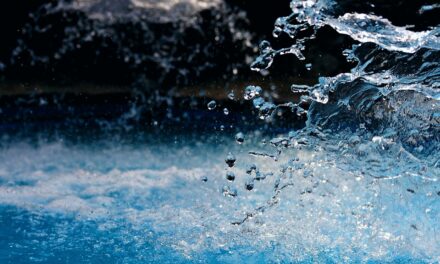Integrated water cycle management strategies explained
Innovative Water Projects, Integrated water cycle management strategies, etc…
The bathtub, once brimming with life, now reflects a stark reality: the Great Salt Lake, our precious natural treasure, is shrinking. The faucets, once gushing with the lifeblood of rivers and streams, now trickle, a testament to the changing climate. The snowpack, our mountain’s winter bounty, melts earlier each year, leaving the rivers and streams parched, unable to sustain the lake’s vital flow.
The once-familiar landscape of the lake now reveals a desolate expanse of exposed lakebed. The dry, salty soil, once submerged, is now carried on the wind, a tangible reminder of the lake’s decline. The consequences are dire: our air, once clean, is now laced with dust, a health hazard for many. Our crops, once thriving, are now struggling to survive, victims of the relentless wind and its salty burden.
The shrinking of the Great Salt Lake is a poignant reflection of our interconnectedness with nature. It is a call to action, urging us to acknowledge the impact of our choices and strive for a future where the bathtub of the Great Salt Lake overflows with life once again.
The Great Salt Lake: A Sea of Trouble
TL;DR – Too Long; Didn’t Read
The Great Salt Lake is shrinking, and that’s bad news for Utah. Climate change, drought, and overuse of water are all contributing to the problem. To help the lake, we need to conserve water, use smarter irrigation, and make policy changes. Groups like the Active Climate Rescue Initiative are working on solutions, but everyone needs to do their part.
The Great Salt Lake’s Watery Journey
The Great Salt Lake is a vital part of Utah’s landscape, and it’s important to understand how water flows through the region. Imagine a giant bathtub. The bathtub is the Great Salt Lake, and the faucets pouring water into the tub are the rivers and streams that feed the lake. These rivers and streams are filled by snowmelt from the mountains surrounding the lake.
The Shrinking Lake: A Sign of Trouble
In recent years, the Great Salt Lake has been shrinking. Think of it like your bathtub slowly draining. This shrinking is caused by a few factors. First, climate change is causing the snowpack in the mountains to melt earlier in the year, which means there’s less water flowing into the rivers and streams that feed the lake. Second, we’re using more water than ever before for things like farming, drinking, and watering our lawns. Finally, droughts are becoming more common, which means there’s just not as much water available.
The Consequences of a Shrinking Lake
The shrinking of the Great Salt Lake has a big impact on Utah. Imagine a giant, salty dust storm blowing across the state. That’s exactly what’s happening. As the lake shrinks, the lakebed is exposed, and the dry, salty soil blows in the wind, causing problems for people with breathing problems and damaging crops.
The shrinking lake also hurts wildlife, like birds that depend on the lake for food and nesting. The loss of habitat for these animals can cause them to disappear, upsetting the balance of nature.
Finding Solutions: A Race Against Time
We need to work together to solve the problems facing the Great Salt Lake. We can start by conserving water. Think about how much water you use each day, and try to find ways to use less. We can also use new irrigation techniques to help farmers grow crops with less water. Finally, we need to change our policies about how we use water in Utah.
Innovative Water Projects: A Glimpse of Hope
The Active Climate Rescue Initiative is one group working on solutions. They’re exploring innovative water projects, such as building new reservoirs to capture water and using technology to improve water management.
Summary
The Great Salt Lake is a vital part of Utah’s ecosystem. The lake is shrinking due to climate change, drought, and overuse of water. The shrinking lake has serious consequences for Utah, including air quality issues, habitat loss, and economic hardship. We need to work together to conserve water, use smarter irrigation, and make policy changes to protect the Great Salt Lake. Innovative water projects and organizations like the Active Climate Rescue Initiative are working towards solutions, and everyone needs to do their part to protect this vital natural resource.
More on Integrated water cycle management strategies…
- ## SEO Keywords related to Integrated Water Cycle Management Strategies & Innovative Water Projects:
- General Keywords:
- Integrated water cycle management
- Water cycle management
- Water management strategies
- Sustainable water management
- Innovative water projects
- Water conservation
- Water efficiency
- Water security
- Water resources
- Water scarcity
- Water pollution
- Water treatment
- Water reuse
- Water infrastructure
- Smart water systems
- Specific Keywords:
- Urban water management
- Rural water management
- Agricultural water management
- Industrial water management
- Wastewater treatment
- Greywater reuse
- Water harvesting
- Rainwater harvesting
- Water desalination
- Water filtration
- Water purification
- Water quality monitoring
- Water resource planning
- Water demand management
- Water pricing
- Water policy
- Water technology
- Water innovation
- Water startups
- Water investment
- Long-Tail Keywords:
- Best practices for integrated water cycle management
- Innovative water solutions for arid regions
- Sustainable water infrastructure development
- Water technology for climate change adaptation
- Water efficiency in buildings and industries
- Advanced wastewater treatment technologies
- Water resource management for agriculture
- Funding opportunities for water projects
- Water security in a changing climate
- The future of water management
- Digital water management systems
- Green water infrastructure solutions
- Water footprint analysis
- Water stewardship programs
- Water education and awareness
- Location-Specific Keywords:
- Integrated water cycle management in [City/Region]
- Innovative water projects in [Country/Region]
- Water management solutions for [Specific industry]
- Water security challenges in [Specific region]
- Water resources management in [Specific watershed]
- Industry-Specific Keywords:
- Water management for municipalities
- Water solutions for manufacturing companies
- Water sustainability for agricultural enterprises
- Water infrastructure development for utilities
- Water technology for the construction industry
- Related Terms:
- Water footprint
- Water scarcity index
- Water stress
- Water governance
- Water diplomacy
- Water rights
- Blue economy
- Circular economy
- Sustainable development goals
- Climate change mitigation
- Climate change adaptation
- This list provides a comprehensive starting point for SEO keyword research related to integrated water cycle management and innovative water projects. You can further refine these keywords based on your specific target audience, industry, and geographical location.











